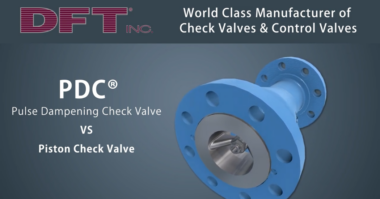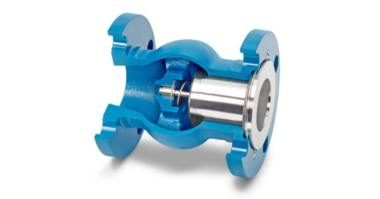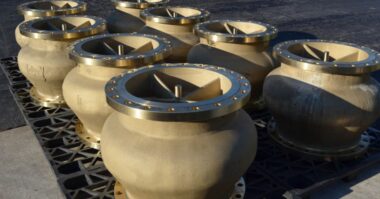It is primarily the purpose of the mining industry to extract minerals and nonrenewable resources from the Earth. As the industry has evolved over the past 4,000 years, especially during the American Industrial Revolution, the technologies and techniques have changed radically.
These innovations often developed due to the increasing demand for greater operational efficiency and effectiveness. In particular, mining companies came to adopt and rely on interconnected valve and pipe systems for dewatering, extraction, and more. Although these new technologies advanced a variety of mining operations for miners, they also present new challenges that must be faced along with these innovative solutions.
Mining Industry Challenges for Check Valves
The main focus of most, if not all, mining operations is maintaining continuous, efficient supply. Challenging the fulfillment of this goal is the durability and longevity of the mining equipment. As modern mining applications are extremely demanding and the equipment—such as valves and pipelines—is susceptible to corrosion, facility owners and managers must account for wear and degradation over time.
These factors necessitate the use of a high-quality check valve and regular maintenance to reduce the risk of equipment damage, breakdowns, replacements, and, consequently, unscheduled downtime. Regular maintenance allows system operations to minimize the effects of common issues experienced during mining operations, such as reverse flow and water hammer.
Mining Industry Applications of Valves
Check valves are used in a variety of applications throughout the mining industry, including the following processes:
- Autoclaving. Check valves prevent reverse flow in operations that require class V shut-off. Higher alloy valves are also a requirement.
- Mine dewatering. Check valves reduce water hammer and support mine dewatering operations, which lower the water table near extraction sites, mines, and quarries by using specialized pumps.
- Pump isolation and discharge. Check valves stop reverse flow and prevent damage to the pump during discharge operations.
- Pipelines. Check valves are used throughout piping systems transferring water to and from mine sites. Often, these pipelines travel great distances and encounter numerous elevation changes.
DFT® Valve Solutions for the Mining Industry
For more than 75 years, DFT® has manufactured high-quality in-line check valves. Their range of check valve products suitable for use in the mining industry includes:
- ALC® wafer check valves
- BASIC-CHECK® threaded check valves
- DLC® flanged check valves
- EXCALIBUR® flanged check valves
- GLC® cast iron flanged check valves
- GLC® flanged check valves
- PDC® flanged check valves
- Restrictor threaded in-line check valves
- SCV® threaded in-line check valves
- SCV-R® threaded in-line check valves
- Vacuum breaker threaded check valves
- WLC® cast iron wafer check valves
- WLC® wafer check valves
Relevant Case Studies and Resources
DFT® provide valve solutions for a broad spectrum of mining applications. In a recent project, one of their customers had a copper mine in Arizona that was experiencing several issues. The mine’s solvent extraction and electrowinning (SXEW) process was facing instances of failing valves, reverse flow, and water hammers. By installing several of the DFT® silent check valves, they resolved all three problems.
To learn more about DFT® valve solutions and how they benefit industrial applications, including the mining industry, check out these resources:
Check valve brochure
Check Valve Installation Rules & Guidelines eBook
If your mining facility has water hammer, reverse flow issues, or unreliable valves, the experts at DFT® are here to help. Contact the DFT® team today to learn more about the different check valves they have to offer.



